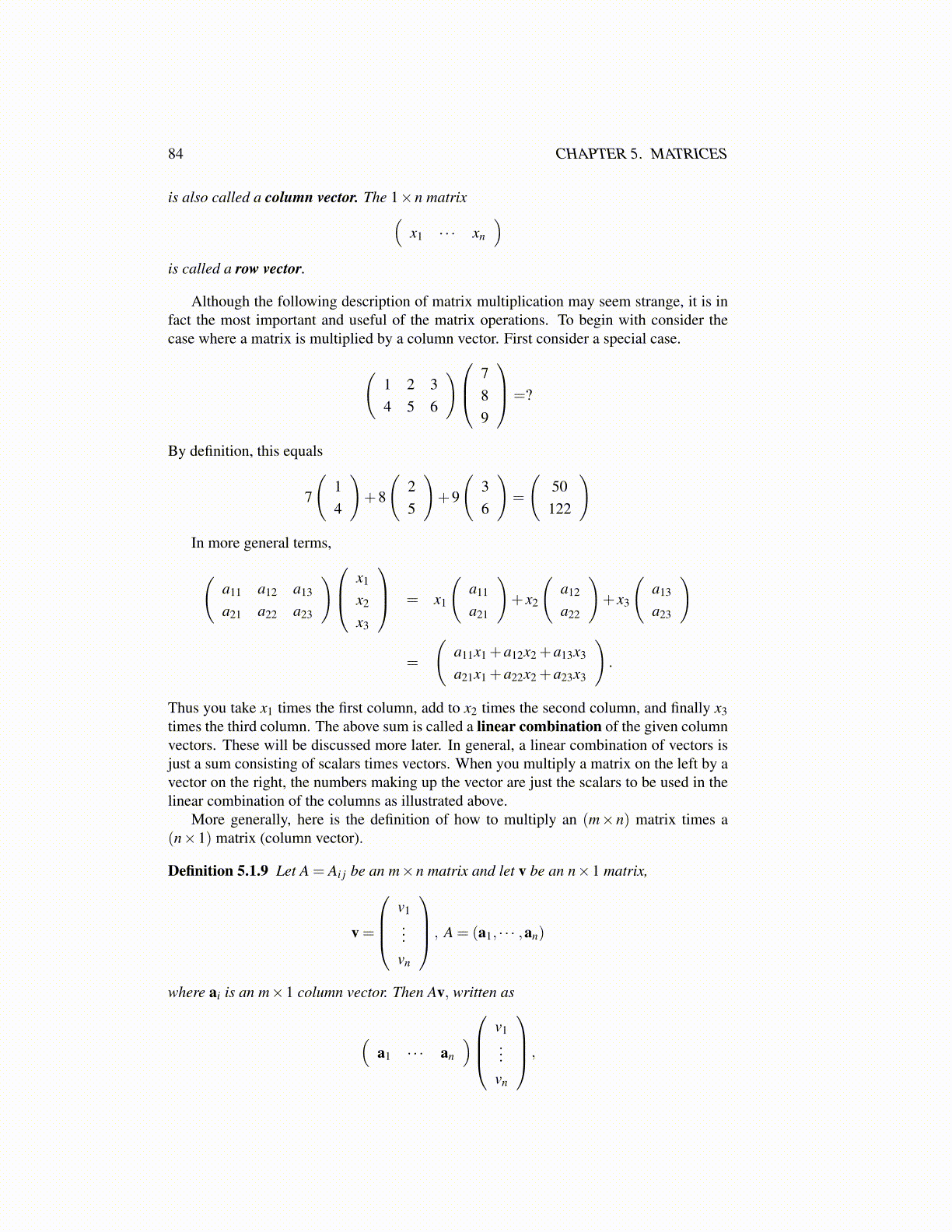
84 CHAPTER 5. MATRICES
is also called a column vector. The 1×n matrix(x1 · · · xn
)is called a row vector.
Although the following description of matrix multiplication may seem strange, it is infact the most important and useful of the matrix operations. To begin with consider thecase where a matrix is multiplied by a column vector. First consider a special case.
(1 2 34 5 6
) 789
=?
By definition, this equals
7
(14
)+8
(25
)+9
(36
)=
(50
122
)In more general terms,
(a11 a12 a13
a21 a22 a23
) x1
x2
x3
= x1
(a11
a21
)+ x2
(a12
a22
)+ x3
(a13
a23
)
=
(a11x1 +a12x2 +a13x3
a21x1 +a22x2 +a23x3
).
Thus you take x1 times the first column, add to x2 times the second column, and finally x3times the third column. The above sum is called a linear combination of the given columnvectors. These will be discussed more later. In general, a linear combination of vectors isjust a sum consisting of scalars times vectors. When you multiply a matrix on the left by avector on the right, the numbers making up the vector are just the scalars to be used in thelinear combination of the columns as illustrated above.
More generally, here is the definition of how to multiply an (m×n) matrix times a(n×1) matrix (column vector).
Definition 5.1.9 Let A = Ai j be an m×n matrix and let v be an n×1 matrix,
v =
v1...
vn
, A = (a1, · · · ,an)
where ai is an m×1 column vector. Then Av, written as
(a1 · · · an
)v1...
vn
,